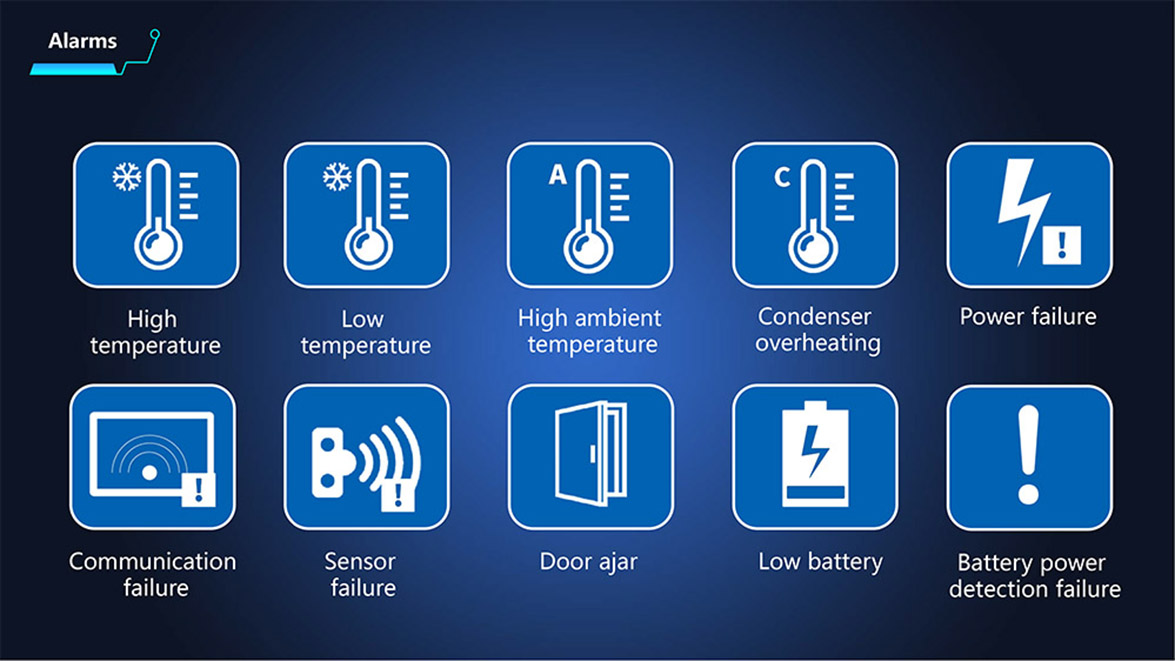What Makes Medical Refrigerator Differ from Residential Refrigerator?
The Differences Comparison Between a Pharmacy Refrigerator and Household Refrigerator

Medical refrigerators are widely used in scientific research laboratories, medical institutions, prevention and control centers, etc. After understanding, you will find that medical refrigerators are generally much more expensive than ordinary household refrigerators, even as much as 2-10 times. Why are medical refrigerators so expensive? How is it better than the average household refrigerator? Can a household refrigerator be used as a medical refrigerator?
The main differences between medical
refrigerators and domestic refrigerators are below:
1. Different Applications and Usages
Household residential refrigerators are mainly used to store basic consumer goods such as fruits, vegetables, frozen foods, and beverages. Medical refrigerators and laboratory refrigerators are mainly used to store biological products such as drugs, reagents, culture media, antibodies, blood, and biological samples.
2. Different temperature control and temperature accuracy requirements
Ordinary residential household refrigerators do not have strict requirements on the internal temperature of the refrigerator, as long as they have the effect of cold storage, preservation, and freezing and anti-corrosion. Therefore, household refrigerators mostly use mechanical temperature control systems, and the temperature display accuracy is ±1°C. The temperature range of the refrigerator is generally between 0-10°C; the temperature range of the freezer is generally between -10°C~-20°C, and the temperature fluctuation range is above ±5°C. Condensation and frosting are also prone to occur in the refrigerator.
Medical refrigerators and laboratory refrigerators use microcomputer intelligent temperature control systems with a more precise temperature control range and a temperature display accuracy of ±0.1°C. The temperature fluctuation range is small, such as the medicine storage box, the temperature control range is 2-8°C, and the temperature fluctuation range is 5±3°C. The temperature of the medical blood refrigerator series can be accurate to 4±1℃. If we use ordinary household refrigerators instead of medical refrigerators to store vaccines, reagents, biological samples and other important experimental related products, due to the lack of fine control of temperature, it is very likely that reagents and vaccine biological products will be inactivated due to freezing, affecting Experimental results.
3. Different layout of temperature sensors
Most ordinary household refrigerators only use one temperature sensor to meet customer needs. The medical refrigerator will have at least 2-7 temperature sensors.
4. Different types of key components
Ordinary household refrigerators generally use domestic low-cost low-compression ratio compressors, which have uneven cooling and large temperature fluctuation ranges. Due to the need for accurate temperature control, pharmacy refrigerators often use airtight and strong high-efficiency compressors, so that the temperature in the storage box can be cooled smoothly and the temperature distribution is uniform. For example, in addition to the layout of temperature probes in multiple places, imported high-efficiency compressors are also used to enhance the temperature control mechanism in the box.
5. Different cooling methods
Most household refrigerators on the market use direct-cooling refrigeration, using a direct-cooling evaporator. The cooling method is relatively simple. The temperature close to the refrigerator wall will be much lower than the temperature inside the refrigerator. If there are too many items in the refrigerator, the internal cooling effect will be affected.
The refrigerators of the medical refrigerator series mostly use finned evaporators, and the eddy current multi-air channel refrigeration system ensures that the temperature inside the box is uniform and constant, ensuring the storage safety of biological products in the box.
6. Different alarms
Most of ordinary household refrigerators do not have an alarm function except for a few models that have a simple over-temperature alarm function. The alarm function of medical refrigerators is relatively complete, such as: high temperature, low temperature, power failure, communication, failure, door opening and closing alarm lights and multiple sound and light alarm functions. Enhanced item storage security.

7. Different production materials
Most of the cabinets of household refrigerators are made of PCM or VCM film-coated boards, and the internal materials are ABS or PS. The polyurethane foam thickness of the insulation layer is between 20-45mm. The medical refrigerator series mostly use cold-rolled spray-coated steel plates, which are anti-corrosion, anti-rust and durable. The thickness of the insulation layer of medical refrigerators is between 40-50mm, and the thickness of the insulation layer of ultra-low temperature refrigerators is about 120-160mm.